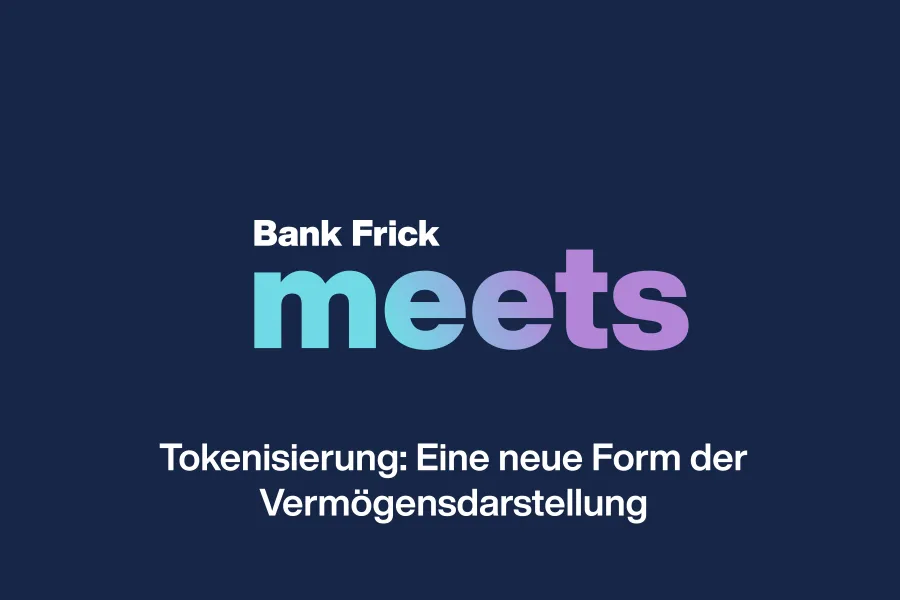Turning crypto investment into an earning asset
With Ethereum upgrading to Proof of Stake, the crypto world is going through one of its most transformative shifts to date. This means that customers will soon be able to earn interest on their digital asset holdings through a process called staking. What staking is, how it will define the future of Ethereum and digital asset custody at large is explained in this article.
One of the most important trends is unravelling before our very eyes: It is Ethereum – more precisely Ethereum 1.0 –, the crypto world’s second largest cryptocurrency by market cap migrating their consensus mechanism algorithm from Proof of Work (PoW) to Proof of Stake (PoS). While there are already some smaller scale open blockchains that are running on this consensus mechanism, Ethereum’s migration to PoS marks a milestone for cryptocurrencies’ overall history. This transition and change will complete the birth of Ethereum 2.0, a new system with advanced functionality as well as scalability.
By switching to PoS, Ethereum is touted to prove that a public blockchain of considerable relevance and size can operate smoothly and securely based on a PoS consensus mechanism. The significance of such a demonstration would be rather big as PoS is regarded as a solution in the ongoing blockchain energy debate. At the same time, Ethereums planned upgrade to Ethereum2.0 is believed to offer great scalability enhancements and to bring down transaction fees drastically.
A risky endeavour, with a great potential though
The move from PoW to PoS and with it the entire new Ethereum 2.0 system has the potential to propel Ethereum into the sphere of the most scalable and most technically advanced blockchains. This could further corroborate Ethereum’s position as the go-to smart contract platform. While the prospects are bright, there are also risks.
For one, the transition proves to be complicated as Ethereum developers are working at the edge of computer science’s most pressing challenges. Moving Ethereum’s consensus mechanism is no easy task. As the switch to PoS involves a complete overhaul of Ethereum’s network, changing the base algorithm is like changing the engine of a flying airplane. Every step and measure needs to be carefully tested, in order to prevent funds of any kind from being lost in the process of migration. At the same time, the game theory poses challenges as well. As blockchains are cryptoeconomic systems based on incentives the game theory has to be properly balanced for the system to work in adversarial circumstances. Problems like the “nothing-at-stake problem”, where validators would engage in costless double-signing, supporting multiple forks or the long-range attack, where a malicious validator creates a competing fork reorganising thousands of blocks in the past seem to have been solved. Since these blockchain systems are emerging, new risks threatening the proper functionality of their PoS consensus mechanisms can come up nevertheless.
Where do we stand? Well, the project has lifted off
In order to make sure the multifaceted transition works smoothly, implementing PoS is done over various phases. The first phase was initiated back on December 1st 2020. To kick things off, the so-called Beacon Chain was launched as the first pillar of Ethereum 2.0. As the central nervous system for Ethereum 2.0, the Beacon Chain stores and manages the registry of validators and their stakes. At the same time and through the Beacon Chain, consensus rules will be applied. Said simply: The Beacon Chain is the base layer for Ethereum 2.0 coordinating the network’s entire on-chain activities.
The Beacon Chain can be considered the output of the coordination mechanism among validators. The latter are in charge of proposing blocks and once those validators agree on a new block, this block is added to the existing Blockchain. After 32 blocks in a row – called an epoch – a checkpoint is established on the Beacon Chain, finalising all the transactions that happened. Which validator gets to add the block and is rewarded with newly issued Ether for doing so, is pseudorandomly selected.
So, through the Beacon Chain and its validator set the security of the new Ethereum 2.0 blockchain is enforced. If validators try to double-spend by proposing incorrect blocks, a slashing mechanism will punish them for their attempted wrongdoing. Validators that do get slashed because of malicious activities see their stake within the network cut down significantly.
Next up: Merging the two systems and initiating sharding
Following the launch of the Beacon Chain, Ethereum’s current mainnet will be merged with the Beacon Chain PoS system. This will mark the end of PoW for Ethereum as Ethereum’s current blockchain will be transferred to the new Ethereum 2.0 network. Effectively, the entire data set of Ethereum 1.0 will be one single shard on Ethereum 2.0.
So, every single address, every Ether and every other token that is now active on Ethereum 1.0 will be transferred. Ethereum developers and stakeholders are working hard to make sure this transition and integration into Ethereum 2.0 will function as smoothly and uninterruptedly as possible. Once this migration has come to pass, Ethereum’s move from PoW to PoS will be complete as Ethereum’s current smart contract and transaction data will subsumed in the new system. If anything along the way goes wrong, there is always the possibility to do a rollback and restore a prior state of the blockchain. This safety mechanism creates assurance for all people involved.
The last step is dubbed the introduction of shard chains. Shards – as they are also called – will give Ethereum more capacity to store, access and process data. They are implemented using a process called sharding. Following a basic concept in computer science, the Ethereum Ledger is split up horizontally to spread the data load. This makes this new setup more scalable as network congestion is reduced and transaction throughput increase because data is offloaded to different shard chains.
After the merging, Ethereum’s current mainnet will have the ability to run smart contracts in the new PoS system. With the other shards that exist alongside, the first version is not planned to be able to handle smart contracts. The ability to store and execute smart contracts as well as handle accounts is projected to be implemented with the second version of shard chains. With the main building blocks being in place by then, shards will be secured and synced up by the Beacon Chain that contains all the needed logic. It will be the Beacon Chains’ job to coordinate all the stakers in the network, assign them to shards they need to work on.
What will Ethereum be like in the future for users?
Whether blockchain banking or classic banking: in both areas, a long-term, successful business relationship is based on values, such as trust and reliability. As a
With all these changes in sight, what will Ethereum look like from a user perspective? Everything that was possible before, is planned to also be possible in the new system. With the big difference that transactions and applications on Ethereum are projected to be much more scalable and therefore faster as well as cheaper, making the entire experience of using Ethereum 2.0 more user-friendly. But not only that. It will also be possible to earn staking rewards by deploying Ether as a staker.
Because Ethereum will be based on 64 shards, Ethereum will resemble one big super blockchain that encompassed various other blockchains that are all orchestrated by Ethereum’s validator set on and through the Beacon Chain. By horizontally splitting data traffic into 64 parallel shards (or minor blockchains), processing capacity can be spread across these parallel shards to increase the system’s overall transaction throughput. Eventually, sharding can be seen as Ethereum’s number one solution to overcome the blockchain trilemma – a public blockchain’s inherent trade-off between decentralisation, security and scalability.
While there is still a long way to until, Ethereum 2.0 will be fully shipped and functional, the pieces are coming together one by one. After the Beacon Chain’s launch in December 2020, another step closer to Serenity (which describes the ”complete” version of Ethereum 2.0) was made with the Berlin Update on April 15th 2021. This hard fork involved the reduction of gas fees and was done as a preparation for the bigger upgrade called the London Fork, which happened in August 2021. This latest hard fork implemented various Ethereum Improvement Proposals (EIPs), one of the most anticipated one being EIP-1559. This changes the fee structure within the Ethereum network making ether potentially deflationary since the more Ethereum is being used, the more ether are being burned.
The various hard forks – Shanghai is yet to come by the end of 2021 supposedly – are done in preparation for Ethereum 2.0. While these hard forks represent no technical prerequisite for Ethereum 2.0, they do make Ethereum’s current public blockchain more efficient and change its incentives. For example: with EIP-1559 implemented now, it most likely the case that Ethereum miners will see their income diminish, making it more probable that they are incentivised to switch to Ethereum 2.0’s PoS.
Right now: minimising the risks associated with the change
As a validator, it is crucial to operate according to the network’s rules to avoid unintended slashing and penalties for downtime. If the act of being a validator is taken seriously and carefully monitored, staking represents lucrative opportunity for digital asset holders. Since there are no entry barriers that prevent anyone from taking part in the PoS consensus mechanism, it is expected that staking will cannibalise the custody business models for virtual asset as well as financial service providers to a certain degree.
We at Bank Frick have identified, that this technological shift will change how crypto services – especially the custody of crypto assets – are structured in the future, as the opportunities and thus needs of customers shift towards earning a passive income. Therefore, Bank Frick has taken measures to prepare accordingly and minimise the risks associated with this change. Although Ethereum staking on the Beacon Chain is already available, we at Bank Frick have considered not to offer this service right now as there is no transferability between Ethereum’s current mainnet and Ethereum 2.0 until the merge. The Bank has long-term partnerships with sustainability in mind, which is why it does not expose customers to unnecessary risks. However, Bank Frick makes every effort to ensure that future trends such as staking are recognised early and acknowledged accordingly.
Share post


Auch interessant

Vom Code zur Wirkung: Mit Blockchain zu mehr Transparenz und Effizienz
Die Blockchain-Technologie, bekannt geworden durch Laszlo Hanyecz' berühmten Pizzakauf 2010, hat sich weit über digitale Währungen hinaus entwickelt. Mit ihren Eigenschaften – Dezentralisierung, Transparenz und Unveränderbarkeit – ermöglicht sie effiziente und sichere Transaktionen ohne Mittelsmänner. Besonders Smart Contracts haben die Einsatzmöglichkeiten der Blockchain erweitert, etwa in Bereichen wie Lieferketten, Automatisierung und grenzüberschreitende Zahlungen.
Kritiker äußern Bedenken hinsichtlich Energieverbrauch und Komplexität, doch moderne Blockchains sind energieeffizienter geworden und durch benutzerfreundliche Schnittstellen leichter zugänglich. Im Non-Profit-Sektor bietet Blockchain großes Potenzial: Spenden können transparent, kostengünstig und nachvollziehbar vom Spender direkt zum Empfänger übertragen werden, wodurch Effizienz und Wirkungsnachweis deutlich verbessert werden. Die Technologie markiert somit den Beginn einer neuen Ära von Vertrauen und Zusammenarbeit.

Einblicke in den Prozess der Gestaltung von AMCs
Actively Managed Certificates (AMCs) haben sich zu einem bedeutenden Bestandteil des europäischen Finanzmarktes entwickelt. Als strukturierte Produkte, rechtlich als Schuldverschreibungen klassifiziert, bergen sie für den Investor ein entsprechendes Gegenparteienrisiko, vergleichbar mit anderen strukturierten Finanzprodukten. AMCs werden in Form von Wertpapieren verbrieft, die den jeweiligen Inhaber das Recht auf Geldrückzahlung oder Lieferung eines Basiswertes geben. Durch den Erwerb wird der Investor somit zum Gläubiger des Emittenten und begibt sich in eine Abhängigkeit im Hinblick auf die Art und Höhe der Rückzahlung, die von verschiedenen Parametern abhängig ist.

Direct Market Access – Effiziente Handelsabwicklung für Fondsstrategien
Liechtenstein verfügt über eine langjährige Tradition in den Bereichen Banking und Asset-Management. Seit dem EWR-Beitritt im Jahr 1995 hat sich der liechtensteinische Finanzplatz sukzessive als fachkundige Anlaufstelle für Promotoren von kollektiven Anlagestrukturen auf dem europäischen Finanzmarkt etabliert.

Blockchain als Garant für die Zukunft der Versicherungsbranche
Der Versicherungsmarkt ist ein wesentlicher Bestandteil der Weltwirtschaft und deckt sowohl persönliche als auch geschäftliche Risiken ab. Es ist daher nicht verwunderlich, dass es sich um eine der grössten Branchen der Welt handelt, die einen geschätzten Wert von etwa 5 Billionen US-Dollar aufweist und rund 2,7 Millionen Menschen auf der ganzen Welt beschäftigt. Von den 5 Billionen US-Dollar entfallen rund 3,7 Billionen US-Dollar auf den weltweiten Lebensversicherungsmarkt, während der Wert des Schaden- und Unfallversicherungsmarktes bei 1,3 Billionen US-Dollar liegt.

Tokenisierung: Eine neue Form der Vermögensdarstellung
Seit Anbeginn der Zeit haben die Menschen gejagt und gesammelt und sich das, was sie fanden, zu eigen gemacht. Dies ist die Zeit, in der das Konzept der besitzfähigen Vermögenswerte zum ersten Mal auftaucht, wenn auch nur in rudimentärer Form. Seitdem haben sich die Vermögenswerte weiterentwickelt und sind komplexer geworden, weil die Menschen zuverlässigere Wege gefunden haben, Vermögenswerte mit Menschen zu verbinden. Heutzutage schliessen Menschen bei der Übertragung von Vermögenswerten Verträge ab.

Blockchain: A technology with social impact
Foundational technology is the most effective tool for impacting society at large and solving the challenges it is faced with. One such foundational institutional technology is the blockchain, which entered the picture through the discovery of Bitcoin in 2009 and has since proliferated and emerged in many different forms.
What does blockchain’s social impact look like?

Wie uns Blockchain-Technologie in der digitalen Zukunft vor Angriffen schützt
Die Blockchain-Industrie verzeichnet seit einigen Jahren ein signifikantes Wachstum. Krypto-Start-ups schiessen aus dem Erdboden, und eines nach dem anderen scheint sich als «Einhorn» zu erweisen. In unserer neuen Reihe werden wir diese Technologie in Blogposts und Webinaren genauer unter die Lupe nehmen und erörtern, weshalb sie so erfolgreich ist und überall im Zentrum des Interesses steht. Dabei werden wir uns weniger mit dem spekulativen Aspekt befassen, mit dem die Blockchain häufig in Verbindung gebracht wird, sondern vielmehr untersuchen, inwiefern sie reale Probleme lösen kann.

Wie klassische Finanzintermediäre in der Krypto- und Blockchain-Welt Fuss fassen können
Mit zunehmender Selbstverständlichkeit fragen immer mehr Kunden nach Dienstleistungen rund um Kryptowährungen. Für Finanzintermediäre eröffnet diese Nachfrage neue Geschäftsmöglichkeiten. Um das Potenzial heben zu können, müssen die Akteure aber auch das Spezialwissen zur Verfügung haben.

Blockchain technology reinvents correspondent banking – just not yet
As one of its major use cases, blockchain technology is said to transform traditional correspondent banking. So far major challenges have pushed back this transformation. It is more likely than ever that with central bank digital currencies on the horizon; blockchain disruption will finally come to fruition in the realm of cross-border banking.

A comprehensive overview of Liechtenstein’s banking regulation
In this in-depth article, the authors show the economic and regulatory environment in which banks in Liechtenstein operate. This article first appeared in the reference work The Banking Regulation Review (Twelfth Edition) published by Law Business Resarch.